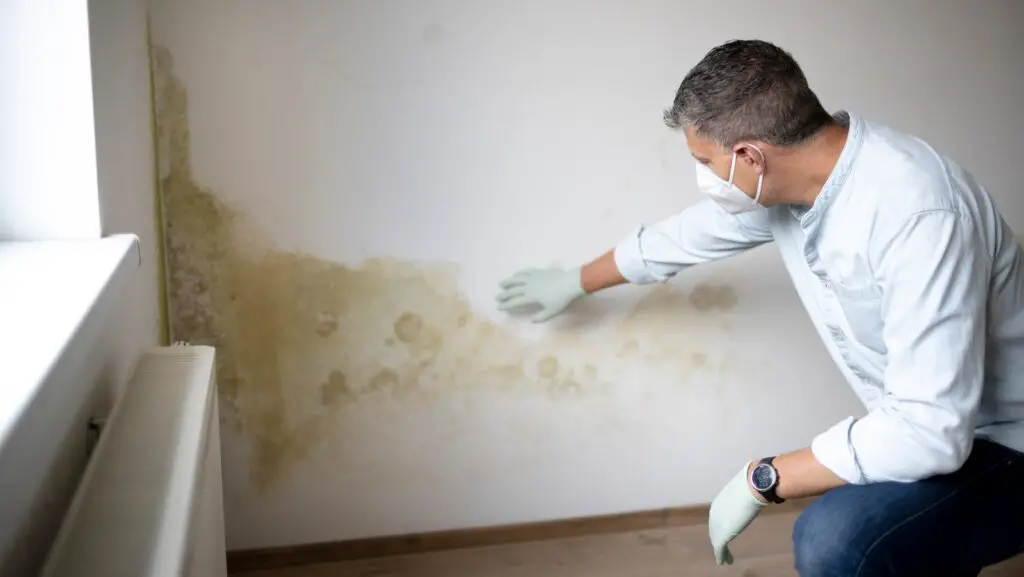Mold on drywall can be more than just an unsightly nuisance; it can also pose serious health risks, especially to those with allergies or respiratory issues. Mold thrives in moist environments, and drywall can unfortunately be an ideal host. If you’ve spotted mold on the walls of your home, it’s essential to address it promptly. Here’s how to safely and effectively clean mold from drywall:
Assess the Extent of Mold Growth
Before you begin the cleaning process, it’s crucial to determine the extent of the mold growth. If the mold covers a large area (more than 10 square feet), or if you suspect it’s inside the walls, it’s advisable to seek professional help as the cleanup process could expose you to harmful spores.
Prepare the Area and Yourself
For smaller mold issues, you can handle the cleanup yourself. Start by wearing protective gear: gloves, N95 mask, and goggles. These will help protect you from mold spores. Seal off the affected area to prevent the spores from spreading to other parts of your home. Use plastic sheeting and tape to cover doorways and vents.
Ventilation
Proper ventilation is crucial when dealing with mold. Open windows or use an exhaust fan to direct the air outside, which helps reduce the concentration of mold spores in the air.
Dry Out the Area
Mold grows due to moisture, so it’s important to dry out the affected area. If the humidity is high, use a dehumidifier. Ensure that the source of any water leakage or condensation is fixed to prevent future mold growth.
Cleaning the Mold
For non-porous surfaces, you can use a solution of one cup of bleach mixed in a gallon of water. Apply the solution to the moldy drywall and scrub gently with a soft brush. Do not rinse the bleach solution away, as it will prevent future mold growth. If you prefer not to use bleach, alternatives like hydrogen peroxide, vinegar, or baking soda mixed with water can also be effective.
Drying the Cleaned Areas
After cleaning, allow the area to dry completely. This could take several hours or a full day depending on ventilation and humidity levels. Using fans or a dehumidifier can speed up the drying process.
Check and Repair
Once everything is dry, check the drywall for any damage. Mold can weaken drywall, and in some cases, it might need to be cut out and replaced if too severely affected.
Prevent Future Mold Growth
To prevent mold from returning, keep the area dry and well-ventilated. Use paint that contains mold inhibitors for areas prone to moisture. Regularly check for any signs of moisture or new mold growth, especially in high-risk areas like bathrooms and basements.
Cleaning mold from drywall can be manageable if done properly and safely. However, if the mold is widespread or if you have health concerns, it’s best to consult with a professional. By taking the right steps to clean and prevent mold, you can maintain a healthy and safe environment in your home.
Monitor Humidity Levels
Maintaining proper indoor humidity levels is essential in preventing mold growth. Ideally, indoor humidity should be kept between 30% and 50%. You can monitor humidity levels with a hygrometer, a device that measures moisture in the air. Adjustments can be made using dehumidifiers, air conditioners, or by simply improving ventilation.
Use Mold-Resistant Products
When repairing or renovating your home, consider using mold-resistant drywall or paint. These products are specially designed to resist moisture and can be particularly useful in damp or prone-to-mold areas like bathrooms, kitchens, and basements.
Regular Cleaning and Inspections
Routine cleaning and vigilant inspections of your home can help catch mold growth early before it becomes a bigger problem. Pay attention to areas where moisture accumulates, such as window sills, bathroom walls, and under sinks. Use mildew-resistant cleaners in these areas to keep them clean and dry.
Address Leaks Promptly
Water leaks from pipes, roofs, or windows can lead to mold problems if not addressed quickly.
Regularly inspect these areas for signs of moisture and repair any leaks as soon as possible. This proactive approach will help maintain the integrity of your drywall and prevent the need for extensive mold remediation.
Educate Yourself About Mold
Understanding the causes and effects of mold can empower you to take effective measures against it.
Mold is not just a cosmetic issue but a potential health hazard. Educating yourself and your family about how to maintain a mold-free environment is crucial for a healthy living space.
Seek Professional Help When Needed
If you’re unsure about the severity of mold or how to handle it, don’t hesitate to seek professional advice. Mold remediation specialists are equipped with the tools, knowledge, and experience to safely remove mold from large areas or handle cases where the mold is hidden within structural elements of the home.
Dealing with mold on drywall requires a combination of thorough cleaning, preventive measures, and sometimes professional intervention. By staying vigilant and proactive, you can protect your home and health from the dangers of mold. Remember, the key to controlling mold is controlling moisture.
Regular maintenance and prompt attention to any signs of moisture will help keep your living space safe and mold-free.







